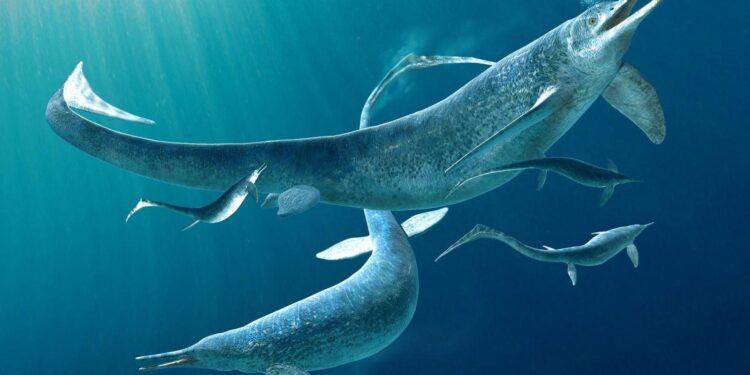Paleontological scientists have discovered evidence of bites on the fossilized necks of two marine reptiles, suggesting that they were decapitated by a predator in a violent event. These Mesozoic marine reptiles evolved extremely long necks as an evolutionary strategy that allowed them to catch prey in the water. The physiognomic characteristics of these animals, with their disproportionately long necks that could double or triple the length of their bodies, have inspired the legend of the famous Loch Ness monster, Nessie.
Paleontologists have long speculated about the possible vulnerability of these long-necked marine reptiles to attack by large predators but have found no fossil evidence to support this hypothesis. However, a team from the Stuttgart State Museum of Natural History in Germany has confirmed this idea by examining the fossils of two marine reptiles of the genus Tanystropheus, which lived 242 million years ago during the Triassic. These fossils showed necks that were completely separated from the bodies and had clear evidence of predator bites.
The two Tanystropheus specimens studied inhabited a shallow sea on what is now the border between Switzerland and Italy. These marine reptiles had extremely long and stiff necks composed of 13 elongated vertebrae. The researchers found bite marks on the cervical vertebrae of both specimens and determined that these bites had caused the neck to fracture. Due to the lack of the rest of the body in the fossils, it was concluded that the cause of death for these reptiles was decapitation.
The predator responsible for these decapitations has not yet been identified with certainty. Due to the relatively small size of the Tanystropheus studied, it is considered that several predators could have performed this act, from large predatory fish to other marine reptiles. However, in the case of the larger Tanystropheus, it is suggested that only a large marine reptile would have been capable of ripping out their necks in a single bite. One possible candidate is an ancestor of the plesiosaurs called Nothosaurus giganteus.










